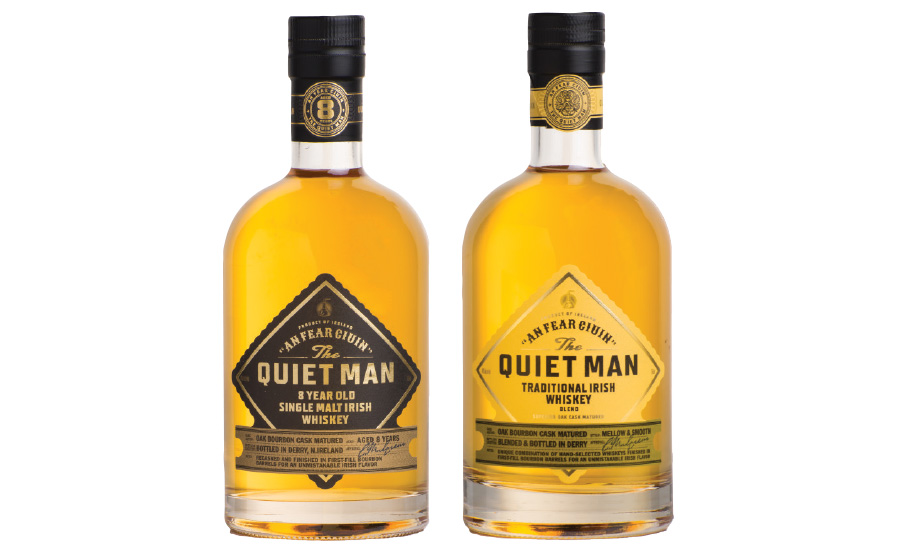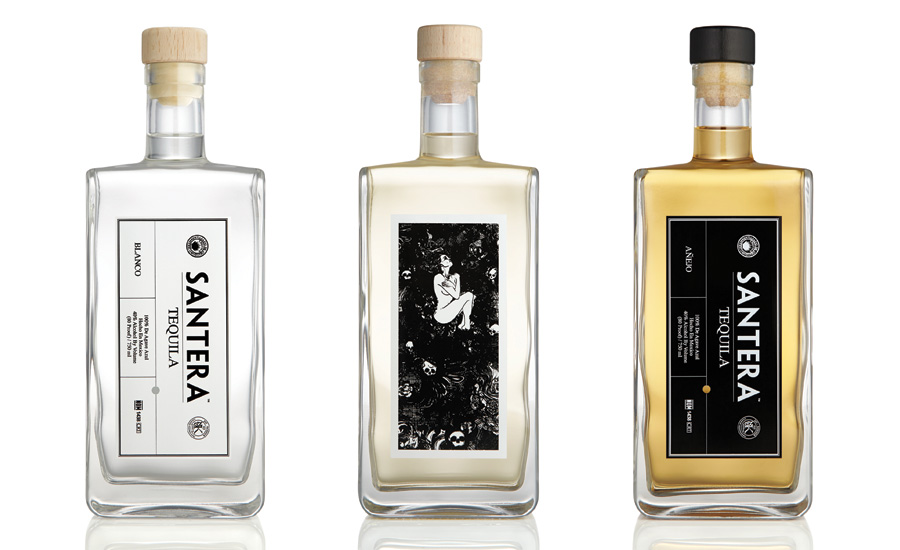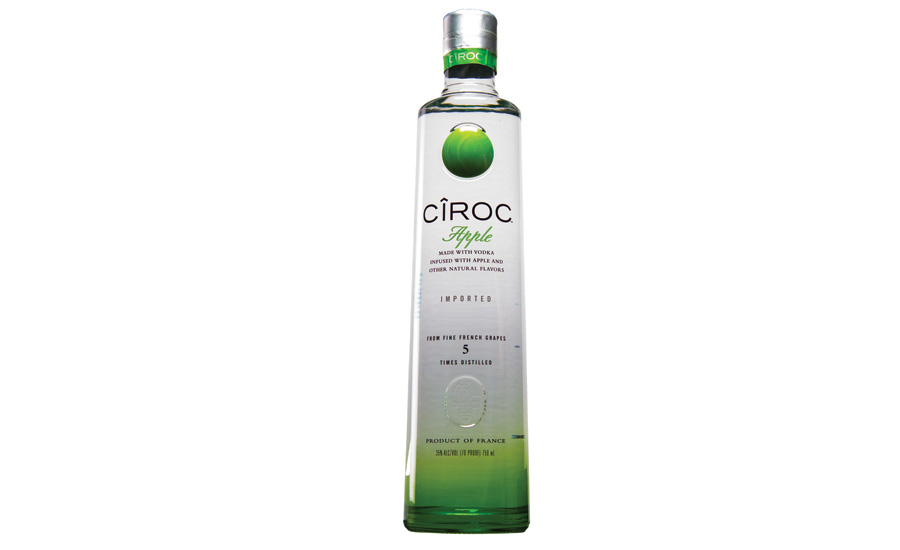Millennials drive growth of premium spirits
Whiskey continues to dominate category, vodka remains top white spirit



In February, the Distilled Spirits Council (DISCUS), Washington, D.C., announced the 2015 results for the U.S. distilled spirits category. According to DISCUS, the category experienced another year of steady growth, with supplier sales up 4.1 percent, volume up 2.3 percent and estimated retail sales of nearly $72 billion in 2015. It also marked the sixth straight year of increasing market share relative to the beer category, DISCUS reports.
Additionally, it reports strong growth for every whiskey segment for the second straight year, with revenues up 8 percent. Tequila experienced sales growth of 9.4 percent, and Cognac was up 16.2 percent, it adds.
"The positive performance of distilled spirits is the result of many factors, including market modernization, product innovation, consumer premiumization and hospitality tax restraint," DISCUS President and Chief Executive Officer Kraig Naasz said in a statement.
London-based Technavio's Lead Analyst of food and beverage Vijay Sarathi notes similar drivers for the spirits category. "The major drivers in the market include the shift in consumer preferences for spirits, increase in preference for spirits among women, increase in health consciousness and the association of spirits as a lifestyle product," Sarathi says.
According to the market research firm's "Alcoholic Beverage Market in the US 2016-2020" report, the spirits segment, which it categorizes as vodka, gin, rum, whiskey, brandy and tequila, is growing faster than the rest of alcohol beverages. "Consumer preference for spirits, especially among women, has been the most significant contributing factor," the report states. "New product launches, [the] rise in import of distilled spirits and the association of spirits with lifestyle are some of the other reasons for the growth of the spirits segment."
It adds that consumers also see spirits as a better-for-you alcohol option, thus driving consumer interest. "Unlike beer, spirits do not cause obesity and are therefore more popular among health-conscious consumers in the U.S.," it states.
Nick Petrillo, beverage analyst for Los Angeles-based IBISWorld, notes that although vodka generates 25 percent of the industry's revenue, whiskey remains the category's strongest player. "[W]hiskey holds the dominant position in the industry and generates, by our estimates, 32.5 percent of industry revenue," Petrillo says.
According to Chicago-based Information Resources Inc. (IRI), the whiskey segment generated more than $2.1 billion, a 10 percent increase in dollar sales, for the 52 weeks ending Feb. 21 in U.S. supermarkets, drug stores, gas and convenience stores, mass merchandisers, military commissaries, and select club and dollar retail chains.
Noting the increased demand, spirits manufacturers have continued to release new whiskey varietals. For example, St. Louis-based Luxco, in partnership with Niche Drinks, Ireland, released its first Irish whiskey — The Quiet Man — in two varieties. The new products are distilled in traditional Irish whiskey pot stills, matured in oak barrels and recasked in first-fill bourbon casks, the company says. The Quiet Man Traditional Irish Whiskey is aged four years, has a high malt percentage and offers an ultra-smooth finish, while the 8 Year Old Single Malt offers a smooth taste and floral notes, the company says.
According to Sarathi, premium and value spirits segments also are experiencing strong growth, most notably across the vodka, whiskey and tequila categories. However, gin, lower-end vodka and other specialty spirits have faced flat growth rates and might see declines going forward, Sarathi adds. "Premiumization among these categories and importance of vendors having relevance with the younger base of consumers will hold key for their growth," Sarathi says.
Sarathi adds that the ready-to-drink (RTD) cocktail segment is faring well in the United States, noting a growth rate greater than 9 percent.
Chicago-based Mintel estimates that the white spirits segment will experience a small growth in volume sales, at just above 1 percent growth through 2020, with vodka remaining the segment leader. "The leading vodka segment continues to post small but positive gains," the market research firm notes in its October 2015 "White Spirits – US" report.
However, as Mintel notes in its December 2015 "Dark Spirits – US" report, white spirits have higher consumption rates than dark spirits. "Despite some growing disenchantment with white spirits, in part due to struggles with complexity and sophistication as consumers trade up to more premium offerings, white spirits are still more heavily consumed," it states.
It adds that consumers report having a lower level of experience with dark spirits. "While advanced drinkers are core dark spirits consumers, opportunities exist with intermediate drinkers — who are likely still educating themselves and finding their favorite varieties, but are also willing to trade up to higher quality products," the report states.
Premium status
Experts highlight a trend toward premium, super-premium and value spirits, and many highlight millennials, and their interest in variety and experimentation, as key drivers. "Millennials of legal drinking age's interest in discovery [is] driving innovation and premiumization," DISCUS states.
Technavio's Sarathi highlights the importance of the demographic to the spirits industry, with millennials accounting for approximately 35 percent of the total spirits consumers. Additionally, millennials consume an estimated 34 percent of the total spirits sold in the world. "Therefore, indicating that the younger population is fueling the growth of the spirits market," Sarathi says.
Regardless of who is buying, premiumization and quality are pushing the category. Although this is benefiting some segments, like whiskey and other dark spirits, Mintel notes that it is not the case of all spirits segments.
Its "White Spirits - US" report notes that consumers have begun to see dark spirits as superior to white spirits. "Consumer interest in dark spirits is growing, creating strong competition for white spirits. … Dark spirits' upward trend may be due to consumer perception that they are superior to white spirits: one in five say dark spirits are more sophisticated and have more unique heritage than white spirits. As the dark spirits continue to trend, white spirits' manufacturers will be increasingly challenged to prove their quality and complexity."
However, the report also notes that consumers are willing to spend more on higher quality white spirits, which provide more opportunity for the segment. "This is especially true for frequent drinkers, who are most likely to prefer super-premium-priced white spirits," the report states. "Quality and high-end or super-premium preferences will likely continue to grow as consumers are looking for more complex, sophisticated flavors."
Yet, the white spirits segment has opportunity through innovation to meet premiumization expectations, it adds.
However, the dark spirits category has not faced the same struggles, but has, in fact, experienced success due to its more sophisticated, premium status, according to Mintel's "Dark Spirits – US" report. "There are opportunities for improvement and innovation as consumers of dark spirits trade up to more premium offerings and look for new flavor experiences," it states. "However, dark spirits will have to work at maintaining their image of sophistication and authenticity as the category evolves to meet consumer preferences."
Fancy, flavorful crafting
Experts note flavor innovations as another driving trend in the spirits category. "[D]emand for flavored spirits such as whiskey and tequila is on the rise," Technavio's report states. "Tequila is available in mango, cucumber, cocoa and coffee flavors, among others, while cherry, apple, cinnamon and honey are some of the popular flavors of whiskey."
Playing on the demand for flavors, Studebaker, a brand of Norwalk, Conn.-based Diageo North America launched a new product line of bottled whiskey cocktails, which includes Studebaker Old Fashioned and Studebaker Manhattan. The Manhattan offers sweet vermouth and a touch of bitters, while the Old Fashioned blends cherry, orange and a touch of bitters, the company says.
Technavio's Sarathi adds that caramel apple, berry acai, coconut and orange are some of the most popular vodka flavors in the United States and have experienced a growth rate of 25 percent. "There is a growing consumer demand for fresh and light fruit flavors, which is creating a new market opportunity for manufacturers globally," Sarathi says. "Apple-, berry- and citrus-flavored spirits have already received consumer acceptance."
As such, vodka brands continue to launch new flavors. Svedka vodka, a brand of Victor, N.Y.-based Constellation Brands Inc., launched Svedka Cucumber Lime. The new flavored vodka offers a crisp, refreshing palate combining zesty citrus and cool cucumber flavors, the company says.
Craft spirits are another emerging trend within the spirits industry. "Generally speaking, the industry's growth has been robust in recent years," IBISWorld's Petrillo says. "In the five years to 2015, industry revenue grew by an annualized 7.8 percent, with much of the industry's growth stemming from the emergence of so-called ‘craft' spirits."
However, the real impact of the segment is still open to debate. "The definition of craft is pretty flimsy and has sort of become a buzzword across all alcoholic beverage industries, but in the case of the distilleries industry, this segment has directly contributed to strong growth in the number of small-scale establishments," Petrillo says.
"… We expect to see a dispropor-tionate increase in the number of new enterprises over the next several years in comparison to revenue. In fact, this has absolutely been the case over the past five years: industry revenue increased at an annualized 7.8 percent from 2010 to 2015, while the number of enterprises in the industry grew by a massive 23.4 percent annualized rate from 289 in 2010 to 828 in 2015. Premiumization has dominated spirits for several years now, and craft spirits have fulfilled this need nicely."
Fruit Wine Rinser Filler Capper or Corker
http://www.sunstarmachine.com/html_products/Fruit-Wine-Rinser-Filler-Capper-or-Corker-464.html
Grape/White/Red Wine Filling Corking Bottle Rinsing Machine 3in1
http://www.sunstarmachine.com/html_products/GrapeWhiteRed-Wine-Filling-Corking-Bottle-Rinsing-Machine-3in1-461.html
Carbonated Wine Washing Filling Capping Machine 3in1 For Glass Bottle And Aluminium Cap
http://www.sunstarmachine.com/html_products/Carbonated-Wine-Washing-Filling-Capping-Machine-3in1-For-Glass-Bottle-And-Aluminium-Cap-462.html









